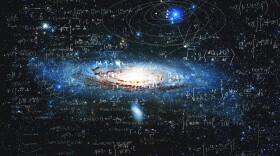-
Neutron stars don't get much attention these days. They're not as notorious as black holes, nor as capable of fully warping spacetime. But this story really started before dawn on July 4, 1054, when a new brilliant star abruptly appeared near the left horn of Taurus the Bull, very close to where the Sun is located during the next few weeks. It was seen in broad daylight for more than a month. Good backyard telescopes show this as the remnant of an exploded star 6,500 light-years away, whose tendrils still rush outward at a thousand miles a second, visibly altering the nebula every few years.
-
Sunday night, May 15, we see a total eclipse of the moon. It is especially welcome because for the last couple of years every lunar eclipse has been penumbral, meaning the moon failed to touch even the edge of Earth’s shadow.
-
Can you name worthy sky-spectacles that don’t require knowledge of constellations, any equipment like a telescope or even binoculars, that are easy to find and strikingly fascinating? Most would cite eclipses, auroras, and meteor showers as filling all those check-boxes. But there’s one more category. Bright conjunctions! Tune in to hear about dazzling conjunctions and what makes them so spectacular.
-
The Morning Star, Venus, is about to perform a series of worthy conjunctions. Right now and for the rest of the month, it’s the brightest member of a four-planet line-up. To its lower left hovers Jupiter; to its upper right you’ll find dimmer Mars and then, highest up, Saturn.
-
This week we’ll hear about our galaxy’s five most abundant elements, the remaining seven dozen elements (which together they make up just 4% of the universe) and the unknown dark matter.
-
Everyone knows that Quantum mechanics can be non-logical. Yet it works when it comes to describing the behavior of atoms and all the other small stuff that makes up our universe. It has also been used to create new technologies such as the transistor. But to believe it means believing things about reality that very few of us would find acceptable. Even Albert Einstein, who helped establish quantum theory more than a century ago, came to question its principles for most of his life. This week we'll explore two basic principles of common sense that quantum theory throws away.
-
Now in late March, each day at noon, the Sun stands one full Sun diameter higher than it was the day before. Hear how knowledge about the Sun is now arriving in a flood thanks to an armada of dedicated solar spacecraft such as SOHO and Stereo.
-
If you’re hearing this Sunday, well, at 11:33 this morning Eastern Daylight Time, it’s the vernal equinox, when we read that "Day and night are equal." But some people must surely glance at their local sunrise and sunset listings and see that day is longer than night at the equinox. Real equality happened several days ago. The culprit is our atmosphere, which bends the sun’s image upward. But, hey, it’s close enough. Like the date itself. If "March 21" pops to mind, you're probably over 50. The final March 21 equinox happened 32 years ago.
-
Mars will come closer and closer as the year goes on. Venus’ extreme brilliance will be seen over most of the year, but it’s only now and the next two weeks that it hovers just above Mars. This week we’ll hear about our two nearest planetary neighbors, Mars and Venus, and why now is only time we’ll see them together.
-
One of today’s most fashionable astronomy pursuits is the hunt for planets beyond our solar system. And one was found orbiting Proxima Centauri, which happens to be the very nearest star to Earth. On this week’s “Strange Universe,” we talk about aliens and exoplanets.

Play Live Radio
Next Up:
0:00
0:00
Available On Air Stations










